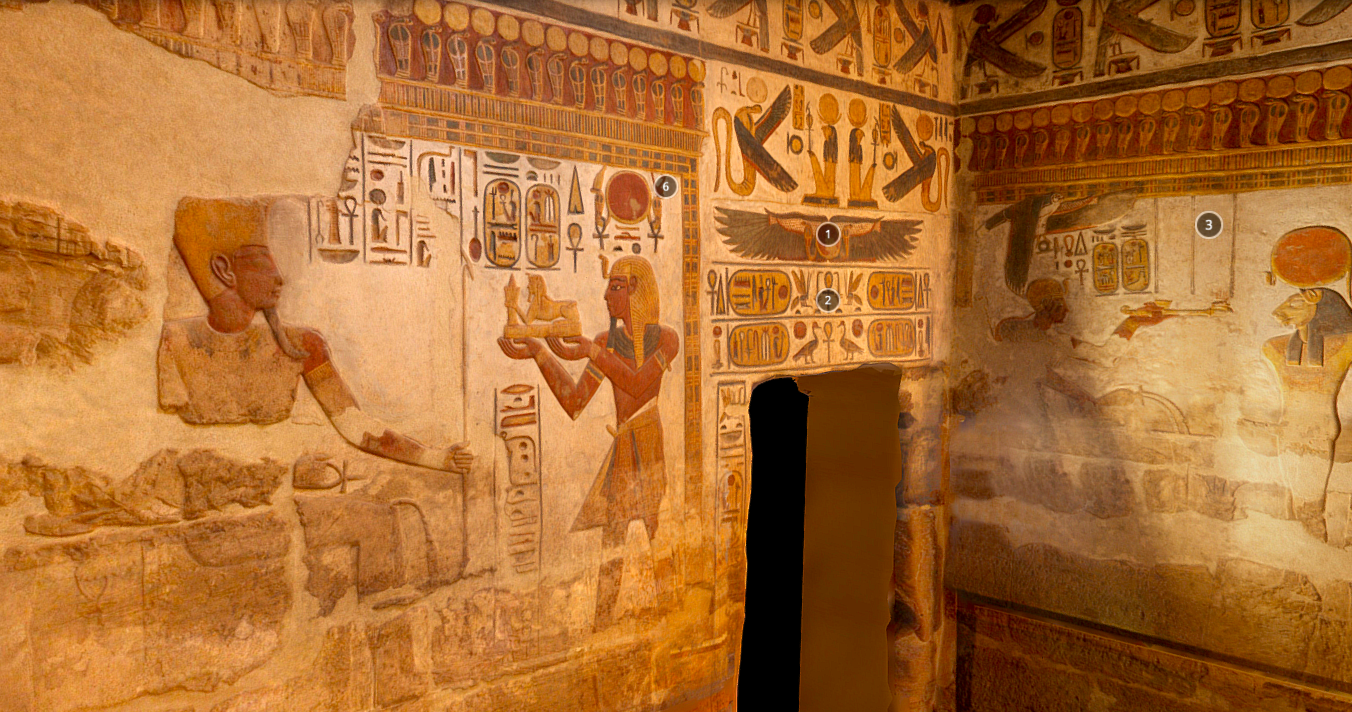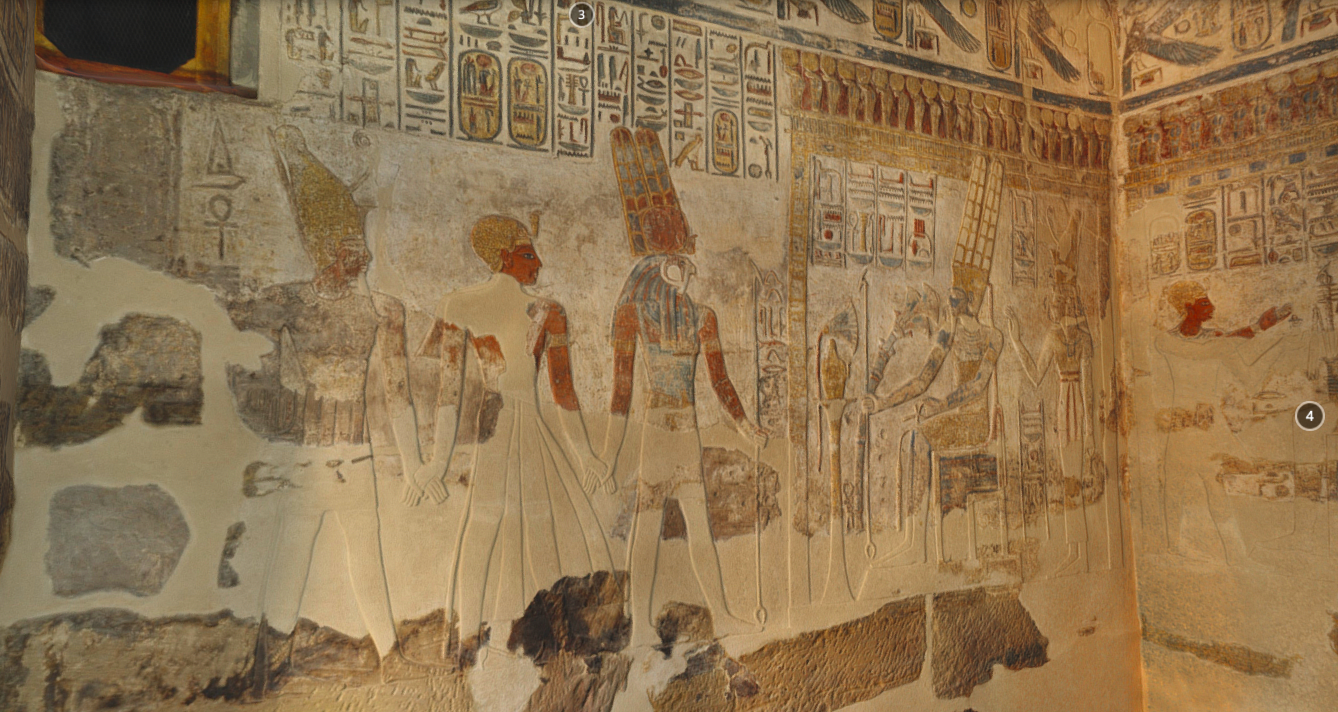Khonsu Temple
Situated within the southwest area of the Karnak Temple Complex on Luxor’s East Bank, Khonsu Temple is regarded as an excellent example of a small but complete New Kingdom temple. Its construction began under Ramses III, however the monument was finished by a number of later rulers, including Libyan generals who were kings of Upper Egypt. The temple was named after Khonsu, the son of Amun and Mut. It consists of a peristyle court, bordered by a portico of twenty-eight columns that lead to a hypostyle hall connected to a barque sanctuary. Some of the most well-preserved and vivid relief carvings at Karnak were long-hidden within Khonsu Temple under centuries of smoke and grime.
The American Research Center in Egypt (ARCE), with funding from the U. S. Agency for International Development (USAID), oversaw and carried out conservation and documentation work in the temple. In later stages, this was accomplished via a field training school for conservators from the Ministry of Tourism and Antiquities. In addition to cleaning and conserving six chapels inside the temple, the project included structural repairs to stabilize the monument, a photographic documentation training school for the Luxor inspectorate, and the introduction of visitor information and signage. The conservation interventions led by ARCE took place at the temple in phases beginning in 2006 and lasted until 2018.
Initial efforts in 2006 focused on installing a stone walkway that surrounded the temple’s east, north and south borders. Subsequent work included fitting new flooring in the main court and the hypostyle hall, cleaning columns in the main court, and partially rebuilding the temple’s north-facing facade. Italian conservators arrived in Luxor in late 2008 and focused on the stabilization, cleaning, and conservation of the temple’s painted reliefs. Their work largely focused on Chapel 12 during the 2008-2009 season. The chapel was outfitted with visitor-friendly sandstone flooring, a unique solar lighting device that filters and diffuses sunlight and eliminates the need for traditional lighting fixtures, a portable wall guard clear paneling structure which can be easily removed for cleaning, maintenance, or to expose the walls completely, and a small solar powered ventilation system that will exchange the air in the chapel during the day to help reduce any moisture caused by visitor respiration. Following these successful introductions, Chapel 12 then served as a prototype for conserving the other chapels in the temple.
In September 2019, ARCE celebrated the temple’s conservation with its partners USAID and the Ministry of Tourism and Antiquities. The event was attended by the Egyptian Minister of Tourism and Antiquities, Dr. Khaled El Anany, U.S. Chargé d’Affairs, Thomas Goldberger, then-USAID Egypt Director, Sherry Carlin, Secretary-General of the Supreme Council of Antiquities, Dr. Mostafa Waziry, and Luxor Governor Councilor, Mostafa Alham.
Model courtesy of David Anderson, Department of Archaeology and Anthropology, University of Wisconsin-La Crosse (www.sketchfab.com/danderson4 and www.uwlax.edu/archaeology).
Visit Chapel 12 here.
Visit Chapel 6 here.

